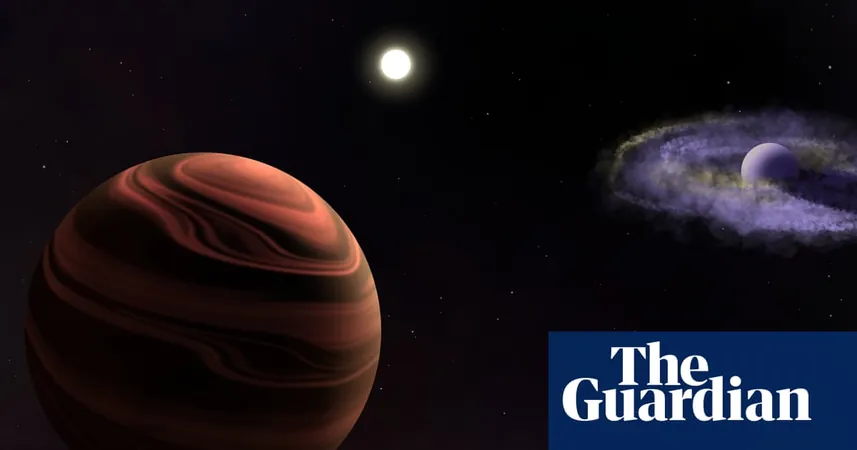
Astronomers Stunned by Mysterious Clouds on Young Planet Near Distant Star
2025-06-10
Author: Daniel
If humans ever consider exploring a planet orbiting a sun-like star in the constellation of the Fly, they'd better be prepared for some astonishing weather patterns.
Recent observations have revealed thick cloud formations shrouding this young planet, primarily composed of mineral dust—and potentially iron—which hints at a dramatic weather phenomenon where rain could fall from the skies.
These intriguing clouds were identified using the James Webb Space Telescope (JWST) in a star system located a staggering 307 light-years away in the southern hemisphere. The star, named YSES-1, is just a cosmic baby at a mere 1 million years old, making it significantly younger than our own sun, which is about 4.6 billion years old.
This young stellar system features two gas giants still in the process of formation and each surpassing Jupiter, the largest planet in our solar system.
Unlocking the Secrets of Planet Formation
Dr. Kielan Hoch, an astrophysicist at the Space Telescope Science Institute in Baltimore, believes that studying this youthful system can reveal invaluable insights into how planets develop around distant stars. “There are only a few multi-planet systems that we have directly imaged,” Hoch noted. “They serve as a unique laboratory to test our theories of planet formation.”
The brightness of these planets, a result of their ongoing formation process, makes them easier to detect. Dr. Hoch explains, "The light we are observing originates from their formation as they shrink and condense."
A Surprising Discovery
To the researchers’ astonishment, both planets fell within the telescope's view, offering a rare opportunity to study two worlds simultaneously. The outer planet, YSES-1c, is roughly six times more massive than Jupiter, while the inner planet, YSES-1b, boasts a staggering mass approximately 14 times that of Jupiter.
The JWST observations pinpointed high-altitude clouds within YSES-1c's atmosphere. However, instead of the water vapor clouds familiar to us on Earth, these clouds are composed of magnesium silicate dust and possibly iron, which could precipitate as rain on this alien world.
A Cosmic Conundrum
This groundbreaking finding marks the first direct detection of such clouds on a planet orbiting a sun-like star, with results published in the esteemed journal Nature. The researchers also uncovered a disc of material encasing the inner planet, YSES-1b, composed of trillions of tons of dust.
However, this discovery adds another layer of complexity to our understanding of planet formation. Hoch points out a puzzling discrepancy: "Why does YSES-1b retain its material while YSES-1c does not?" Plus, it's curious that a planet just 16 million years into its life still has a surrounding disc, as traditional theories suggest these structures should settle within the first 5 million years.
A Gateway to New Insights
The unexpected differences between the two planets raises further questions about their formation in identical environments. "We wouldn't expect them to appear so disparate if they originated from the same protoplanetary disk," Hoch remarked. Thanks to the remarkable capabilities of JWST, scientists are poised to gather more data, refining models and deepening our understanding of planet formation across the universe.




 Brasil (PT)
Brasil (PT)
 Canada (EN)
Canada (EN)
 Chile (ES)
Chile (ES)
 Česko (CS)
Česko (CS)
 대한민국 (KO)
대한민국 (KO)
 España (ES)
España (ES)
 France (FR)
France (FR)
 Hong Kong (EN)
Hong Kong (EN)
 Italia (IT)
Italia (IT)
 日本 (JA)
日本 (JA)
 Magyarország (HU)
Magyarország (HU)
 Norge (NO)
Norge (NO)
 Polska (PL)
Polska (PL)
 Schweiz (DE)
Schweiz (DE)
 Singapore (EN)
Singapore (EN)
 Sverige (SV)
Sverige (SV)
 Suomi (FI)
Suomi (FI)
 Türkiye (TR)
Türkiye (TR)
 الإمارات العربية المتحدة (AR)
الإمارات العربية المتحدة (AR)